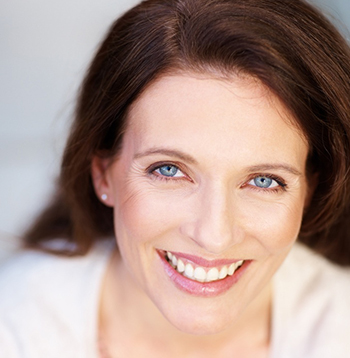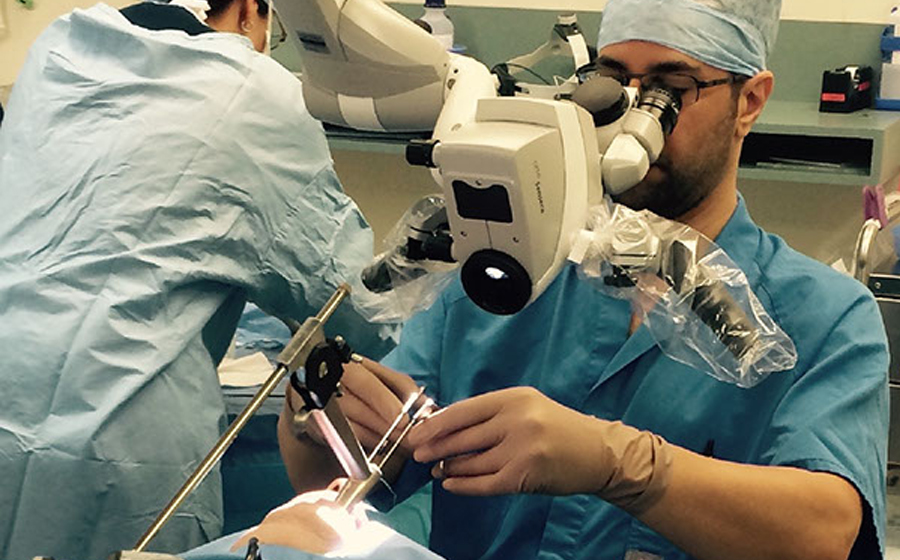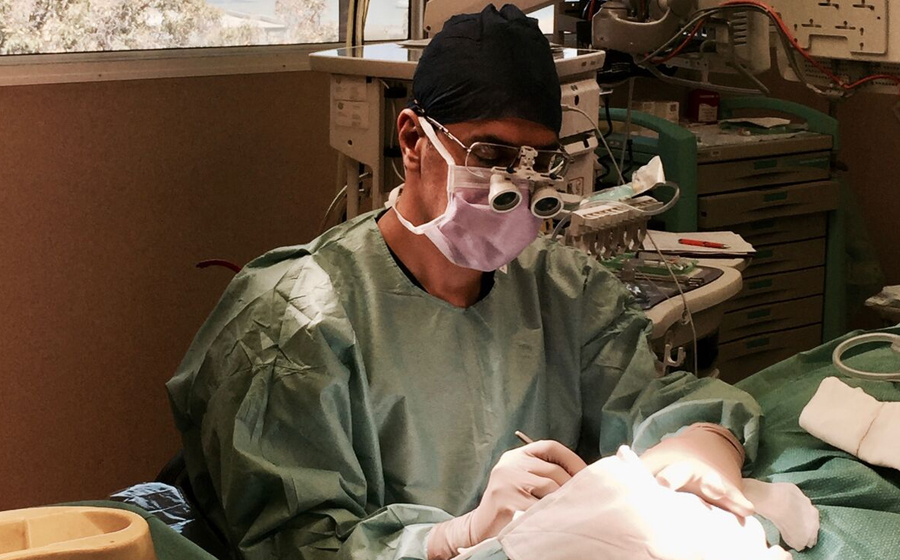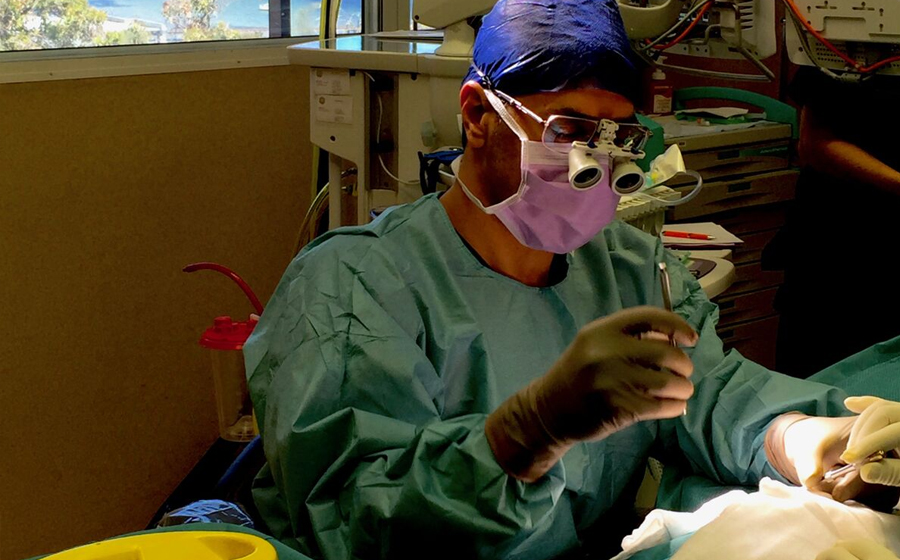Facelift and Neck lift
Facelift, Mini Facelift Surgery, Best Facelift results, Natural facelift results Perth
Dr Imani’s goal in facelift surgery is for his patients to look refreshed and younger yet keep their natural facial appearance. Facelift surgery is the ultimate in facial rejuvenation and has become one of the most popular and well-known forms of plastic surgery. Unlike non invasive treatments such as lasers, wrinkle relaxers and wrinkle fillers, facelift procedures actually reposition the deeper structures of the face making the face and neck appear smoother and more defined. More and more people want to look as youthful as they feel physically and mentally. We can conceal an ageing body with good attire and do exercise to keep toned, however it’s not so easy to hide the signs of an ageing face!
You are ready for a facelift and neck lift if:
• Your look older than you feel.
• Your look older than your are
• You are tired of getting regular Non-surgical treatments such as wrinkle relaxer, injectable fillers, facial lasers, and skin tightening devices which do not give you the same rejuvenation they once did when you were younger.
• You are looking for a low-maintenance, long lasting treatment for your ageing face.
• You desire to enhance your appearance for yourself, to boost your confidence and improve the way you feel about yourself.
• You are in good physical and mental health.
• You are ready to look like you did 10-15 years ago when you were younger.
Who benefits from a facelift?
As we age, our face and neck show the effects of gravity, excess sun exposure, smoking, and the stresses of daily living. Fine lines become wrinkles, creases form between the nose and mouth; the jaw line grows slack and droops forming jowls; skin folds and fat deposits appear around the neck. The number of chins may also multiply! These changes can give us a tired or angry look. If you are concerned with any of these changes facelift surgery could improve your looks.
A facelift can be performed on its own or as part of a total facial rejuvenation. A facelift usually means a face and neck lift. It is designed to tighten the jowls and the loose neck skin. Several variations of surgeries are available depending on your individual needs. A facelift does not lift the eyebrow (seeBrow Lift ) or smooth the lines around the eyes or mouth. These concerns can however be addressed by a forehead lift at the same time as a facelift which provides for a harmonised facial rejuvenation. Skin conditioning, laser resurfacing and the use of injectable materials such as dermal fillers and/or wrinkle relaxers, can further enhance the rejuvenation of your face. At your consultation with Dr Imani, possible remedies for any specific problem you see in your face will be addressed in detail. No matter what the plan, Dr Imani's goal remains the same: to produce natural, not over-pulled skin with long lasting results.
The best candidate for a facelift is a man or woman whose face and neck have begun to sag, but whose skin still has some elasticity and whose bone structure is strong and well defined. Most patients are in their forties to sixties, but facelifts can be done successfully on people in their seventies or eighties if they are fit and healthy.
Click here to contact IMANI Facial Plastic Surgery and Cosmetic Specialists for a consultation for your facelift in Perth.
Some people have a facelift once and then undergo no further surgery. On the other hand, some people enjoy the benefits and after 10-15 years they may wish for a further touch-up procedure. Much of the duration of the facelift depends upon the individual's lifestyle and their tendency to undergo further ageing.
What does the surgery involve?
There are many options in facelift surgery. These include:
1. Mini facelift
2. SMAS facelift
3. S-Lift
4. MACS lift
5. Short incision facelift/Short scar facelift
6. Ponytail lift
7. Deep plane facelift
Incisions usually begin in the hairline at the temples, extend in a natural line inside the cartilage of your ear, and continue behind the earlobe to the lower scalp behind the ear and the neck hair line. This helps hide the scars. The skin is separated from the underlying tissues and gently smoothed back to relieve the redundant folds. Tightening of the underlying muscles of the face is performed with special techniques. Dr Imani utilises many techniques depending on your anatomical requirements to perform your facelift surgery. These include: Mini facelift, S lift, SMAS plication, SMAS resection, MAC lifting - Minimal Access Cranial Suspension, deep plane facelift and extended deep plane facelift in order to provide smoother skin on a solid foundation to rest upon. The excess skin is then removed and the remaining skin is brought back into position. Following surgery, a small thin tube may be temporarily placed under the skin, behind your ear, to drain any fluid that might collect there. We wrap your head loosely in bandages to minimise bruising and swelling. The dressing is removed and replaced the next day.
The surgery is performed on an outpatient or inpatient basis. You can resume non-stressful activities during the first week. In about 7-10 days you can wear camouflage makeup and resume most normal activities. The healing process with a facelift is gradual and final healing may take several weeks.
What are the different types of facelift surgery?
(a) Mini-Facelift (SMAS Plication/ SMAS Imbrication, SMASectomy)
The mini facelift is an abbreviated version of full facelift surgery. Its best to think of it as a “short incision” facelift. The Mini Facelift rejuvenates the lower face for patients with mild sagging that causes early jowls and excess skin in the lower face and the upper neck. This procedure utilises a short incision, or an S shaped (S Lift) incision creating a pony tail that hides the incision behind the ears around the inside of the ear cartilage (opening hole of the ear), and behind the earlobes and back of the ear.
The SMAS is the Superficial Muscular Aponeurotic System in the lower face and neck. It is tightened using sutures/stitches which lifts and softens the facial appearance. The SMAS is not dissected and lifted off the deeper facial layers as for the SMAS flap and deep plane techniques. The SMAS is instead tightened with stitches. In SMAS plication, sutures are used to elevate it, in SMAS imbrication it is folded on itself, and in SMASectomy the loose SMAS piece is removed and stitched tighter. For younger patients that do not have heavy jowls or significant facial aging, the mini-facelift is a suitable facelift procedure.
(b) SMAS Flap Facelift
A SMAS Flap facelift technique is used for patients with more sagging and heavier facial tissues with advanced aging. SMAS Flap techniques lift the SMAS. A muscle “flap” is created, lifting the muscle off the deeper structures of the face, and smoothing it out. The edges of the cut SMAS are secured in higher positions in the face. This lifts the heavy face.
(c) Deep Plane Facelift
The deep plane facelift is the most sophisticated rejuvenating type of facelift surgery it rejuvenated the face and neck . In addition to the jawline and neck, it lifts the cheeks, nasolabial folds and the midface using the same incision as the short-flap facelift plus a hairline extension behind the ears and down the neck. The muscle and fibrous tissue are separated from the underlying layers of the cheeks, face and neck. The skin + fat + the underlying muscles are left connected and moved as a composite unit, not separated as in the SMAS flap techniques. The deep tissues are then lifted and repositioned using a vertical vector higher in their original position, reversing the effects of ageing by 10-20 years.
What is a Mini Facelift?
Mini facelift surgery is performed when the face is in its early stages of ageing. This procedure involves local anaesthesia or twilight sedation or general anaesthesia depending on the patient’s preference and medical history. Dr Imani performs Mini facelifts to address early drooping of the soft tissues and loosening of the skin in the face and the neck caused by gravity induced descent changes which results in jowl formation and loss of the definition of the jawline. Gravity induced descent, loss of elastin and weakening of the facial ligaments also cause Marionette lines at the corner of the mouth and the chin, a turkey neck and vertical bands develop in the neck.
Many of middle-aged patients who feel that dermal fillers and non-surgical facial procedures no longer help their appearance become ideal candidates for a Mini facelift. With ageing the benefit of these non-surgical treatments lessens and filler fatigue sets in. You need more and more fillers and wrinkle relaxers. In these patients a mini-facelift is the best option for a more cost-effective and longer-lasting rejuvenation. The cost of a Mini facelift in Perth, far out ways the cost of repeated filler and toxin injection over a 4-to-5-year period. After a Mini facelift operation, the maintenance requirements are reduced to minimal doses of wrinkle relaxers and skin surface treatments such as quality skincare products and facials.
A Mini Facelift targets the following face and neck areas of concern:
· Jowling
· Marionette Lines
· Dropped Cheeks
· Loose Neck/Vertical Bands
Dr Imani customises each face and neck rejuvenation procedure to suit to his patient’s needs. Whilst classifying facelift surgery with different names is helpful the reality is that each operation is customised for each individual anatomy and degree of ageing. This is like a master fashion designer specifically creating a garment for an individual. With this approach, Dr Imani’s results look natural and beautiful. Patients do not look pulled, stretched, or artificial, simply put the patient’s face is transported back 15 years to their younger version.
What is a deep plane facelift?
A deep plane facelift involves repositioning and tightening the deeper layers of facial tissues (muscles). This type of facelift targets the superficial musculoaponeurotic system (SMAS), a layer of tissue that lies beneath the skin and fat. The entire facial unit is lifted in composite manner (skin, fat, muscle and fat pads.
Unlike traditional facelifts that focus mainly on lifting and tightening the skin, the deep plane facelift involves releasing and repositioning the SMAS layer, facial retaining ligaments and fat pads, allowing for a more natural and longer-lasting result.
Incisions for a deep plane facelift are made along the hairline, extending around the ear, inside the ear, behind the ear and down into the neck (in the hairline) The incisions are carefully planned to minimise visible scarring. Dr Imani lifts and repositions the deeper tissues, including the SMAS layer, to address sagging and loss of facial volume. This technique aims to create a more youthful and refreshed appearance.
Because the procedure addresses the deeper layers of the face, the results of a deep plane facelift are more natural-looking compared to traditional facelift techniques. Deep plane facelifts provide longer-lasting results compared to some other facelift techniques. However, the longevity of results can still be influenced by factors such as genetics, lifestyle, and the natural ageing process.
Are there risks associated with facelift surgery?
Yes. There are risks involved in all medical procedures. Dr Imani will gladly discuss and disclose all possible risks, benefits and alternatives involved at the time of consultation. Our practice staff will provide you with written procedure specific information sheets after your consultation.
Post Operative Recovery
There is unlikely to be any significant discomfort after surgery; simple analgesics as prescribed by Dr Imani are sufficient. The face and neck are particularly sensitive to swelling and a certain degree of bruising is to be expected. Albeit rare, severe or persistent pain or a sudden swelling of your face should be reported to us immediately. The use of cold compresses in the first few days after surgery is extremely comforting and will minimise bruising and swelling. Some numbness of the skin is quite normal; it will disappear in a few weeks or months. You will need to keep your head elevated and as still as possible for a couple of days after surgery, to keep the swelling down.
If you’ve had a drainage tube inserted, it will be removed one or two days after surgery. Bandages, when used, are usually removed after one to five days. Your skin may look pale, bruised, and puffy but this will return to normal. Most of your stitches will be removed after five days (if you have not had absorbable stitches inserted). Your scalp may take longer to heal, and the stitches or metal clips in your hairline could be left in a few days longer.
You should be up and about in a day or two, but plan on taking it easy for the first week after surgery. Be especially gentle with your face and hair, since your skin will be both tender and numb. Avoid strenuous activity for at least two weeks (walking and mild stretching is fine). Avoid alcohol, steam baths, and saunas for several weeks and limit your exposure to the sun for several months. Above all, get plenty of rest.
Scars are barely visible as they are usually hidden by your hair or in the natural creases of your face and ears. Your face will continue to age with time, however, the effects of the facelift are lasting. Years later, you will continue to look better and as if you had never had a facelift at all.

Anaesthesia:
General anaesthesia (fully asleep) or local anaesthesia with sedation (twilight anaesthesia, fully unaware or sedated).
In/Outpatient:
Overnight stay with a qualified nurse in an accredited hospital. Depending on the patient and the extent of the surgery, the procedure can be performed as a day case.
Length of Surgery:
4-10 hours.
After Surgery:
The bandage is removed and replaced with a facial corset the next day. Your hair may be washed in 5 days and any drains that may have been placed are removed. You will be encouraged to rest with your head elevated with two to four pillows for the next seven days.
Pain Score:
Minimal pain, relieved with simple pain killer.
Recovery and getting back to work:
Back to work: 10-14 days.
Strenuous activity: 2 weeks or more.
Bruising: 2 weeks.
Must limit exposure to sun for several months.
Duration of Results:
10-20 years.
Any surgical or invasive procedure carries risks. Before proceeding, you should seek a second opinion from an appropriately qualified surgeon.
Cost of Facelift:
The cost of facelift in Perth Western Australia is varied depending on your particular needs, the nature of your problem and the experience and the expertise of the facial plastic surgeon you see.
The cost for Mini facelift in Perth with Dr Imani ranges from:
$15,000-$25,000
The cost of full facelift and neck lift surgery in Perth ranges from:
$20,000-$45,000
Pre & Post Facelift Instructions:
PRE-OPERATIVE GUIDELINES
Two weeks prior to and post facelift surgery
1. No Vitamin E
2. No Alcohol- No smoking, Vaping or taking nicotine containing compounds; these are not advised as they increase bleeding and post-op bruising and impede healing.
3. Take 2000-3000 mg. Vitamin C; daily as tolerated.
4. Take one Vitamin B Complex tablet per day; i.e. B Complex, B6, Biotin
5. Tell us about all your prescribed and over the counter medications, herbal supplements, vitamins and health supplements etc which you are taking. Please take NO MEDICATION unless cleared through our office. Specifically, DO NOT take any ASPIRIN, IBUPROFEN, NAPROXEN or other anti-inflammatory medications. All the above will increase bleeding and must be avoided. Please notify us of ANY medication that you are taking. This includes over-the-counter drugs like nose drops/sprays, cold and headache medication, health store remedies, vitamins & herbs. Please call this office before taking any other medications or using any products during this 4-week pre-op and post-op period.
6. Only PARACETAMOL is allowed pre-op and post-op for pain and/or fever + other medications prescribed to you after surgery.
7. Hair should be coloured prior to surgery. Hair colouring is not recommended for at least four weeks after surgery.
8. Please pick up necessary prescriptions on PRESCRIPTION LIST and purchase all necessary items on SHOPPING LIST (see below)
DAY BEFORE SURGERY
1. Wash face and shampoo hair with any antibacterial liquid soap, Tea tree oil or chlorhexidine containing shampoos and washes. Please do not use any hair products, i.e. crème rinse, mousse, gel, etc. or face products, i.e. moisturiser.
2. Take pre-op Famciclovir– anti-viral, by prescription; take as directed - this is for patients who have had a history of cold sores, shingles, or are undergoing laser resurfacing. Famciclovir should continue for 5 days after surgery.
3. DO NOT eat or drink ANYTHING after midnight except as directed by our staff.
4. Your anaesthetist will call you the day or night before surgery
5. Do not take any medications the night before surgery unless cleared by Dr. Imani or your anaesthetist.
6. Check that your overnight bag is complete
7. No jewellery or metal of any kind is permitted in the operating room. Please leave all valuables and jewellery at home.
NIGHT BEFORE SURGERY
1. Drink enough water to hydrate yourself as you will be needing to FAST 6 HOURS PRIOR to surgery
2. Wash face and shampoo hair with any antibacterial liquid soap. Please do not use any hair products, i.e. crème rinse, mousse, gel, etc. or face products, i.e. moisturiser.
3. Take any prescribed sleeping tablet or Melatonin if you have difficulty sleeping due to anxiety
4. Do not over eat or under eat or fast too early.
DAY OF SURGERY
Arrive at: 6:45 am or as directed by the hospital preoperative staff
1. Do not eat or drink anything. Brush your teeth, being careful not to swallow any liquid.
2. If you are very thirsty, you may have a drink of water or (preferably a sports drink like Gatorade) up to 4 hours prior to your surgery. You cannot drink non clear fluids.
3. Wash your face only using an antibacterial soap, rinse, pat dry. Please do not apply any skin products. Do not wash or wet your hair. You may shower, being careful to keep hair dry.
4. Remove contact lenses.
5. Please bring a credit card, Medicare card, Health insurance card, Cheque book to the hospital in case you need to pay for anything.
6. Leave all other valuables at home or with family members.
7. Wear loose, comfortable button down clothing. Bring a robe to wear in the admitting area. Bring a scarf or hat to wear when leaving the hospital, if desired. Wear flat, nonskid shoes.
8. Make arrangements for someone to drive you to and from the hospital. (Medication in your system may affect your driving ability).
9. Arrange for someone to remain with you at least 36 hours following surgery. A FRIEND OR FAMILY MEMBER MUST ACCOMPANY YOU WHEN YOU LEAVE THE HOSPITAL.
10. DO NOT drive following surgery until cleared by Dr. Imani or his staff.
11. DO NOT sign any papers or make important decisions for at least 24 hours after surgery. Prescribed medications may alter your judgment.
PRESCRIPTION LIST (all medications will be prescribed tou after surgery)
FAMCICLOVIR – Antiviral medication; take as directed. For 7 days
CEPHALEXIN or AUGMENTIN – Antibiotic; may differ according to allergies/sensitivities; take as directed starting the day after surgery. For 10 days
LORAZEPAM – Anti-anxiety medication; may be used for sleep; please do not drive when taking this medication; as few as required
PARACETAMOL – Please take 1gram regularly for the first 3-5 days if you are experiencing any discomfort or pain
OXYCODONE – Pain reliever; take with food ONLY IF YOU HAVE SEVERE PAIN; please do not drive when taking this medication; 20
KENACOMB OINTMENT – Apply once a day to all suture lines, 30gram tube.
For eyelid surgery, you will also need the following:
Upper Lids: CHLORSIG OPHTHALMIC OINTMENT -- antibiotic medication; apply to upper eyelids three times per day for seven days starting the day after surgery; 1 tube
Lower Lids: TOBRADEX DROPS – for relief of scratchiness; 3 drops in each eye, 2 times per day for five days starting the day after surgery; 1 bottle
SHOPPING LIST PLEASE HAVE THE FOLLOWING ITEMS AVAILABLE:
VITAMIN C (remember you take 2000-3000mg/day for 2 wks before and 2wks after surgery)
VITAMIN B COMPLEX
ANTI-BACTERIAL SOAP & SHAMPOO
PARACETAMOL – before and after surgery, as needed
Vitamin E ointment (Blackmores Natural or similar) & Vitamin A ointment (Ungvita). Combine the two and apply 4 times a day to all suture lines
3% HYDROGEN PEROXIDE for wound care, apply twice a day with a cotton wool ball on suture lines (EXCEPT THE EYE AREA)
COOL COMPRESS EYE GEL PACKS (for use as COLD eye compresses)
COTTON WOOL BUDS/Q TIPS to use with 3% hydrogen peroxide
GATORADE OR POWERADE (NOT SUGAR-FREE OR LOW CAL)
NATURAL OR ARTIFICIAL TEARS (for eye surgery); (ex: Genteel Gel for eyes, HypoTears)
CETAPHIL or DERMEZE GENTLE SKIN CLEANSER (for Normal skin) – do not buy “regular to oily”
AQUAPHOR OINTMENT (Dermeze) or VASELINE PETROLEUM JELLY - large jar (especially if laser resurfacing is planned)
OVERNIGHT BAG CHECKLIST:
o Vit E ointment
o Vitamin A ointment
o All other doctor prescribed medications (original containers)
o Vitamin C 2000-3000mg/day (remember: 2 weeks before and 2 weeks after surgery) and Vitamin B Complex
o Prescription/Insurance card, Credit card, Cheque book
o Shopping list items (see above)
o Light-weight robe
o Button or zip front sleepwear; nothing over your head for one week
o Large Sunglasses and/or Eyeglasses (if necessary) loose fitting or stretchy
o Scarf or loose-fitting hat (optional)
o Flat, non-skid shoes
o Personal toiletries; i.e. toothbrush (regular or baby-size), toothpaste, deodorant, feminine hygiene products, etc.
o Optional items: mobile phone, laptop, chargers, books, magazines, etc.
o If staying more than one night:
- Extra sleepwear
- Casual lounging clothes
- Shampoo, wide-tooth comb, narrow tooth comb
- Specialty snacks or drinks you might enjoy
Got a Question?
Thank you for your enquiry!
We will be in contact with you soon.


